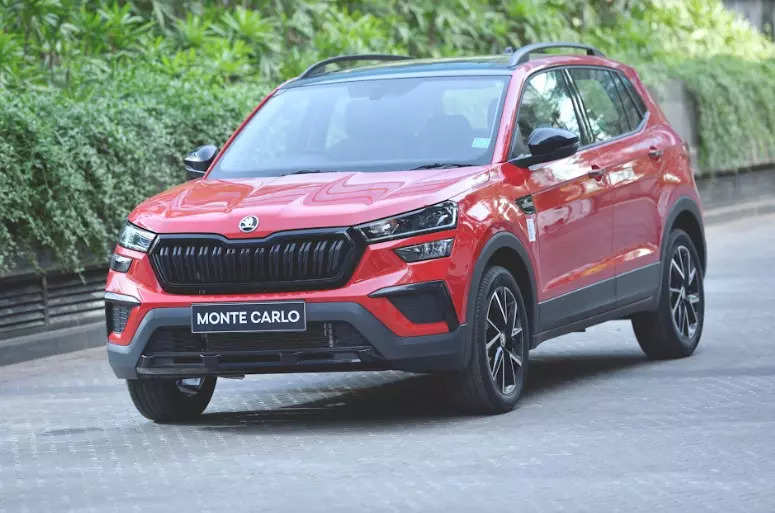
New Delhi: In a market with shrinking model lifecycles, the challenge is to keep the portfolio as fresh as possible. Three years ago, Skoda Auto India launched the Kushaq SUV, which led to its maker more than doubling its annual sales to over 53,700 units. However, during the last calendar year, Skoda’s sales fell nearly 6% to 48, 800 units. The Czech carmaker is preparing to rev it up with multiple models next year.

Not surprising then that SUVs are being planned to do the task. At the top end, it will launch the second generation of its flagship SUV Kodiaq. Expected to hit the market by June next year, the SUV will be bigger and pricier than the current one. The Kodiaq, Skoda’s first 7-seater full size SUV, was launched in India 7 years ago, and has sold nearly 10,000 units in the market.
There’ll be a gap before the new gen version of the model. “We would like to have a break between the old one and the new one for some time,” Petr Janeba, Brand Director, Skoda Auto India, tells ETAuto. The gap could be around three months. The new Kodiaq is based on Volkswagen’s MQB-EVO platform. A niche model, the Kodiaq contributed 5% of Skoda Auto India’s sales in 2023. This translates to sales of a little over 2,440 units for the year.
The big volume, compact SUV
On the opposite end of Skoda’s SUV spectrum will sit its first compact (sub-four metre) SUV. It is expected to reach dealerships by February next year. The compact SUV will be a big stake move under Skoda’s ‘Next Level Strategy’. A key goal under this business plan is to achieve annual sales of at least 100,000 in India starting 2026.
“We are bringing a most adult car in the segment. We are basically bringing a platform from the upper segment to a lower segment. So we are not doing a really small car,” says Janeba. The compact SUV will share the MQB-AO-IN platform with the bigger Kushaq. In preparation for the SUV, which will have to fight some well-established competitors like Maruti’s Brezza, Tata’s Nexon, Hyundai’s Venue, Skoda Auto India plans to increase its brand touchpoints from the current 260, to 350 by next year.
While enhanced market reach will be important for the brand’s growth, what is equally crucial, if not more, is to make the compact SUV score well on the affordability index. ”We understand where the music is playing, where we need to start. and we will be following very much competition. So the prices will be competitive,” says Janeba. Skoda Auto India expects the compact SUV to contribute anywhere between 60,000 and 90,000 units a year.
Upgrades for Kushaq, Slavia
As for its current best-seller Kushaq, which is facing stiff competition from fresher models,and its sedan sibling Slavia, Skoda is working on sprucing them up. Janeba says, “We are upgrading even our Kushaq, Slavia range, but step by step.”
One key learning that Skoda Auto India gets from the Indian market is that it needs to be more frequent in providing new features, upgrades for its models, And, not to mention keeping after-sales costs competitive too. “We are setting up the prices of the spare parts and labor for the dealers. We have pan-India the same spare part prices, and the labor charges, which again, like the car, will be competitive,” says Janeba.
For Janeba and his team, the plan is to take the Skoda brand to a higher level starting 2025, and make India the second largest base for the global OEM. Currently, it is among the top five markets of the Mladá Boleslav headquartered carmaker. There may not be much to write home about this year as the passenger vehicle market is also showing signs of cooling off.
















